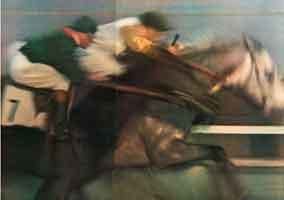Frequency monthly Year founded February 1946 | Circulation 160,000 | |
 | ||
Editor Alfred Max, Artistic director Alfred Brandler to 1950, then Albert Gilou Publisher Société d'études et de publications économiques; from 1960 Hachette Founder Humbert Frerejean and Didier Rémon | ||
Réalités was a French monthly of the post World War II era which commenced publication in February 1946, flourishing during the Trente Glorieuses, a period of optimism, recovery and prosperity in France after the austerity of Occupation, ceasing in 1978. Its articles ranged across French culture, economy and politics, and featured profusely illustrated stories of interest to tourists, especially those traveling to French colonies.
Contents
Editorial objectives
The magazine's founders were entrepreneurs Humbert Frerejean (1914-2001) and Didier Rémon (1922–), the editor Alfred Max, and first artistic director Alfred Brandler, replaced in 1950 by Albert Gilou. They proclaimed an intention to produce a high-class, profusely-illustrated publication which was to be outward-looking, an 'observatory on the world', after the years of Occupation during which information about the rest of the world was restricted. In a mission statement they expressed interest in leading readers to discover "how the other lives, whether a thousand kilomètres away or close by, how they eat, dress, work, love, entertain". ("Comment vit l'autre, à des milleurs de kilomètres ou à proximité, comment il mange, s'habille, travail, aime, s'amuse.").
In November 1946 Didier Rémon created Société d'études et de publications économiques (SEPE) (Society of studies and business publications), registering Réalités as a press and publishing group, and which from 1960 becomes part of the Hachette group.
From 1947 the magazine included a literary supplement, with theater plays, novels, or topical documents, and other supplements and special issues devoted to visual arts, fashion, business affairs, children and youth, followed.
Readership and influence
Colourful, slick and glossy, roughly A4 in size (slightly larger than 8 ½” x 11”), and costing 150 francs per issue (approximately the value of $US25-$US30 in 2015), Réalités catered to the sophisticated and wealthy reader. In its early years at least, on average, 160,000 copies are distributed each month, mostly by subscription. Its content included stories on the economy and politics alongside articles of interest to tourists and on French culture.
The publisher of Réalités, the Société d'études et publications économiques, received funding from the 'Mission France' initiative of the Marshall Plan. It therefore also served to promote American culture and political influence in France and Europe, which was prompted by a pervasive American francophilia and perception of France as a frontier against Nazi resurgence and communist influence. Copies were circulated in Hungary and Czechoslovakia. There was an edition for the United States, 'Realities in America' (1949–1974) and in 1971 a Japanese-language version was launched.
Photography
Photography was given central place in the magazine under art director Albert Gilou. In 1949, photographs replaced the hand-drawn illustration which had hitherto appeared on each cover of Réalités. Covers were devoted to photos which would generate surprise, intrigue or mystery, but not shock or horror. All sorts of images were employed but the dominant genre, at least through the early years, was humanist photography, in particular that of staffers Édouard Boubat and Jean-Philippe Charbonnier, espousing the optimistic values of the contemporary exhibition The Family of Man in which both exhibited. An emphasis on photography helped promote the reputation of the publication. Among the photographers (of whom, from 1950, Édouard Boubat, Jean-Philippe Charbonnier, Gilles Ehrmann and Jean-Louis Swiners became salaried employees) were contributors Émile Savitry, Henri Cartier-Bresson, Robert Doisneau, René Burri, Edward Steichen, Robert Capa, William Klein, Richard Avedon, Irving Penn. At first each issue carried sixty pictures in black and white, though the magazine printed colour photographs from 1950. Then, from the mid sixties, most images were in colour, almost exclusively so from the late sixties. Photo essays often extended over twenty pages. Edouard Boubat described the experience of working for Réalités:
"It was beautiful, and very educational for us, really exciting in that we were not necessarily sent to the "hotspots" of the world, [in fact] sometimes going where nothing was happening, and there's nothing to grab. Then one really understands the reality of a country, of a situation. Escaping the news, or what we call the news, and is often a tragic smokescreen that hides the deeper reality, it's an opportunity.".Cessation
Réalités magazine was most influential between the years 1950 and 1970, employing a journalistic style of long articles associated with pictorial illustration which is now generally replaced by other media. Its last edition was published in December 1978 with the number 390, and it was then absorbed by Spectacular World.
